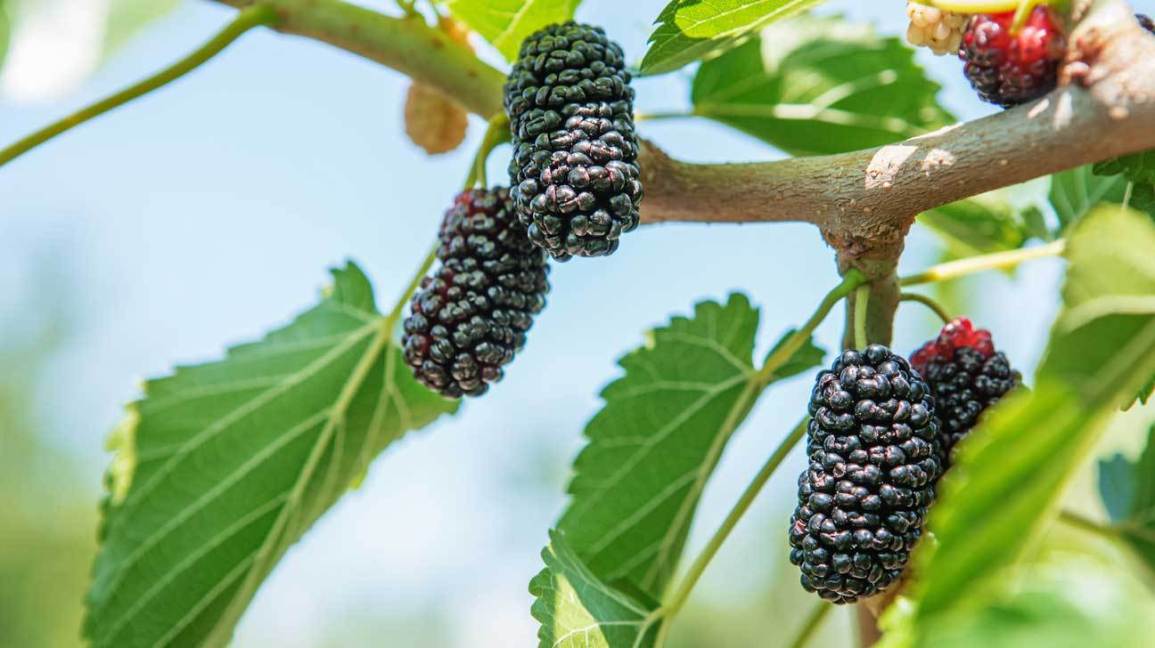
According to Department of Sericulture Deputy Director Mohammad Farooq Bhatti, the new mulberry plant is able to yield fruit within a year’s time as compared to other varieties which can take about 10 years or more to reach maturity and begin bearing fruit. “However, if you plant it in February, it will start yielding fruit in February or March of next year. After bearing fruit once, the tree can be cultivated again by grafting, so by monsoon season the leaves will grow out and the tree will be ready to bear fruit once again,” said Bhatti. “The tree produces about 260 pounds of oxygen and absorbs carbon dioxide at the same rate. It usually bears about 40 to 80 kilograms of fruit and can be easily planted in average one to 1.5 foot pots at homes or on roofs,” he added.
While speaking about the sericulture department’s new mulberry variety, Deputy Director Mohammad Farooq Bhatti said that fruit tree is being developed under the Prime Minister’s Billion Tree Project and can be cultivated across all districts of the province. “The fruit can be planted in guava and kinnow orchards as well as in a separate garden. It is especially suited for areas where temperature ranges between 25 to 30 degrees Celsius, which is optimum for its growth. “As per Bhatti, this sapling is already available in the market for Rs200 to Rs300, whereas a large plant can cost up to Rs1000. However, the sericulture department sells the plant for only Rs20, out of which Rs13 makes for the plant’s production cost. “We prepared some 15,000 plants in the first phase, which were sold out. We are now working on preparing our second batch another 15,000 plants,” Bhatti informed The Express Tribune.
Mulberry tree produce is considered as valuable material for pharmaceutical use because of bio-active compounds and is used as raw material for various industries such beverage making and sericulture. Leaves and fruit from the mulberry tree have been traditionally used to treat sore throat while mulberry syrup has remained a popular remedy for cough in South Asia for centuries. However, more recently, the Sericulture Department, in partnership with experts from GCU Lahore, has begun experimentation to use the plant to develop a sugar substitute safe for diabetic patients.
According to Dr Mohammad Tahir, a GCU professor privy to the project, the country hasn’t paid enough attention to the production of by-products from mulberry leaves and fruits until now. Considering that Pakistan already produces the fruit in large quantities every year, there is a great potential to use mulberry by-products to mass produce sugar, teas and tonics in less than four years. “Mulberry is an antioxidant that is not only capable of boosting the immune system but also protects the body from many diseases, so these products can be consumed by all kinds of people,” Tahir told The Express Tribune. “We have already produced green tea from its leaves, which is safe for diabetic consumption and more beneficial than most other green teas available in the market today.
Published in The Express Tribune, June 7th, 2020.


































COMMENTS
Comments are moderated and generally will be posted if they are on-topic and not abusive.
For more information, please see our Comments FAQ